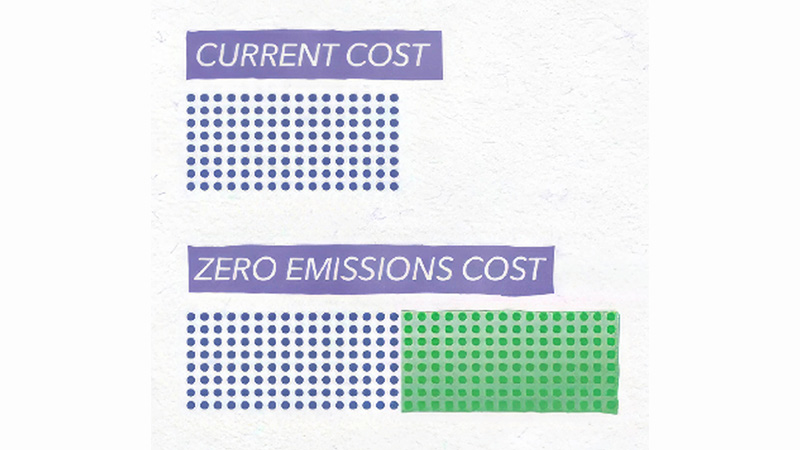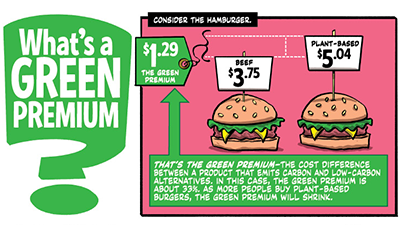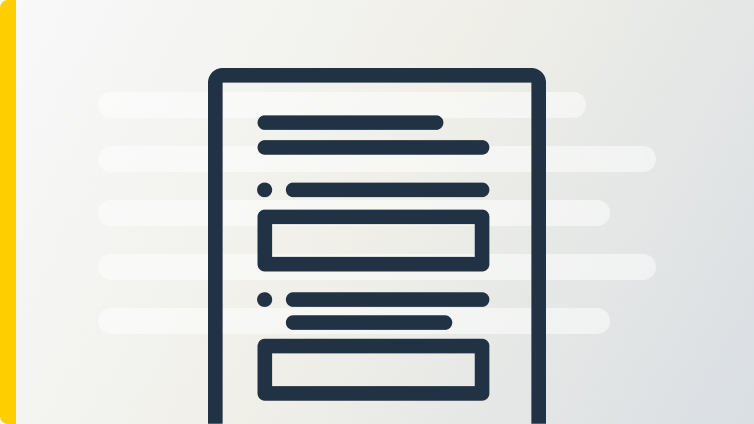The Cost of Decarbonizing
Teacher Resources
Driving Question: How can we manage the costs of decarbonization?
How much will consumers be willing to pay for low- or no-carbon alternatives? Examining the “green premium”—the extra cost for low-carbon products—can be a valuable way to evaluate climate solutions and guide efforts to maximize impact.
Learning Objectives:
- Define the term green premium.
- Explain the relationship between green premiums and behavior, policy, and innovation.
Vocab Terms:
- carbon capture and sequestration (CCS)
- carbon tax
- green premium
- net zero
- subsidy
Opener: The Cost of Decarbonizing
To teach this lesson step, refer to page 2 of Lesson 3.5 Teaching Guide.
Why Does Money Matter?
To teach this lesson step, refer to page 2 of Lesson 3.5 Teaching Guide.
Why talk about money when we talk about climate change? Explore why costs matter when it comes to addressing climate change.
-
Guiding Questions
-
Before you read
Preview the questions below, and then skim the article. Be sure to look at the section headings and any images.
While you read
Look for answers to these questions:
- What is a green premium?
- How can the green premium be a useful tool?
- What is one reason that green premiums are high?
- How can governments help reduce green premiums?
- How can businesses help reduce green premiums?
- How can individuals help reduce green premiums?
After you read
Respond to this question: What do you think is the most effective way to lower the green premium? Why?
What Does the Green Premium Tell Us?
To teach this lesson step, refer to page 4 of Lesson 3.5 Teaching Guide.
Explore the Climate Project Infographics Guide for some tips for using infographics in the classroom.
How can the green premium help decide what solutions to focus on? Explore how the concept can inform actions of government, businesses, and individuals.
-
Guiding Questions
-
Before you read
Preview the questions below, and then skim the full infographic, paying attention to things like prominent colors, numbers, charts, and types of text. How do you know where to start and in which direction to read? How do you know which numbers are most important? What concept is the focus of the graphic?
While you read
Look for answers to these questions:
- What is the green premium?
- What does a high green premium reveal about a product or service?
- What is the green premium for low-carbon cement? What can be done to reduce it?
- What is a negative green premium? How can we encourage people to buy technologies with negative green premiums?
After you read
Respond to this question: What are other ways that individuals, businesses, or government can work to lower the green premiums for low-carbon technologies?
The Cost of Decarbonizing
To teach this lesson step, refer to page 5 of Lesson 3.5 Teaching Guide.
This blog post – Engaging students with video – provides four steps in engaging students with videos.
The green premium is a tool for understanding the cost of implementing climate solutions. Watch the video to explore how the green premium can help us determine where to focus our efforts, and then investigate the problem further in the activity.
-
Guiding Questions
-
Before you watch
Preview the questions below, and then review the transcript.
While you watch
Look for answers to these questions:
- What is the green premium?
- How might the green premium impact a school cafeteria’s ability to serve plant-based burgers?
- In addition to sales price, what other factors are included when determining the green premium for an electric vehicle?
- What is a negative green premium? What’s an example of a negative green premium?
- Why do heat pumps continue to have low adoption rates?
- Why is understanding the green premium an important part of reducing emissions?
After you watch
Respond to this question: What’s one technology with a high green premium we should invest in developing? Why?
Key Ideas
Policy Analysis
To teach this lesson step, refer to page 8 of Lesson 3.5 Teaching Guide.
What are the policies in place to make climate solutions more accessible? Explore one government policy to see what’s working, and what’s not.
Closer: The Cost of Decarbonizing
To teach this lesson step, refer to page 10 of Lesson 3.5 Teaching Guide.
Our Openers and Closers Guide will provide more information about these short, but important, activities at the beginning and end of each lesson.
How can we drive demand for low- or zero-carbon technologies? It’s up to you to see if you can make a strong case.
Unit 3 Assessment: Climate Innovation
To teach this lesson step, refer to page 10 of Lesson 3.5 Teaching Guide.
Our Writing Guide shares our approach to informal and formal writing, including DBQ’s—check it out!
This writing assessment is an opportunity for you to showcase what you’ve learned in this unit by analyzing documents and creating an argument in response to a prompt.






